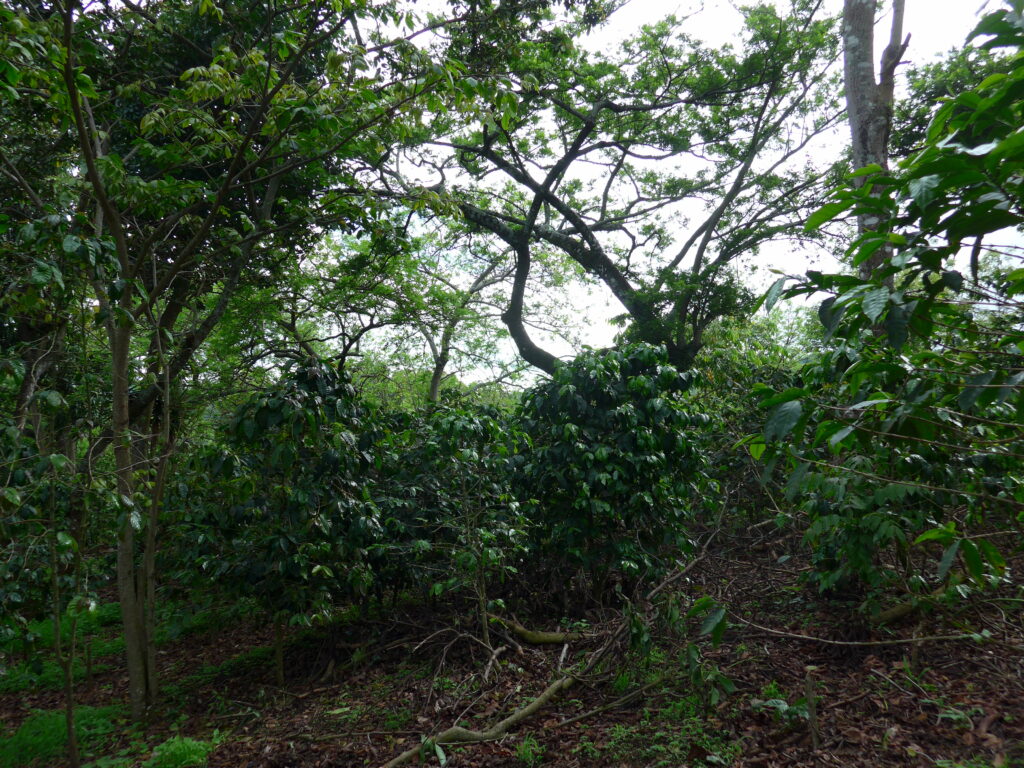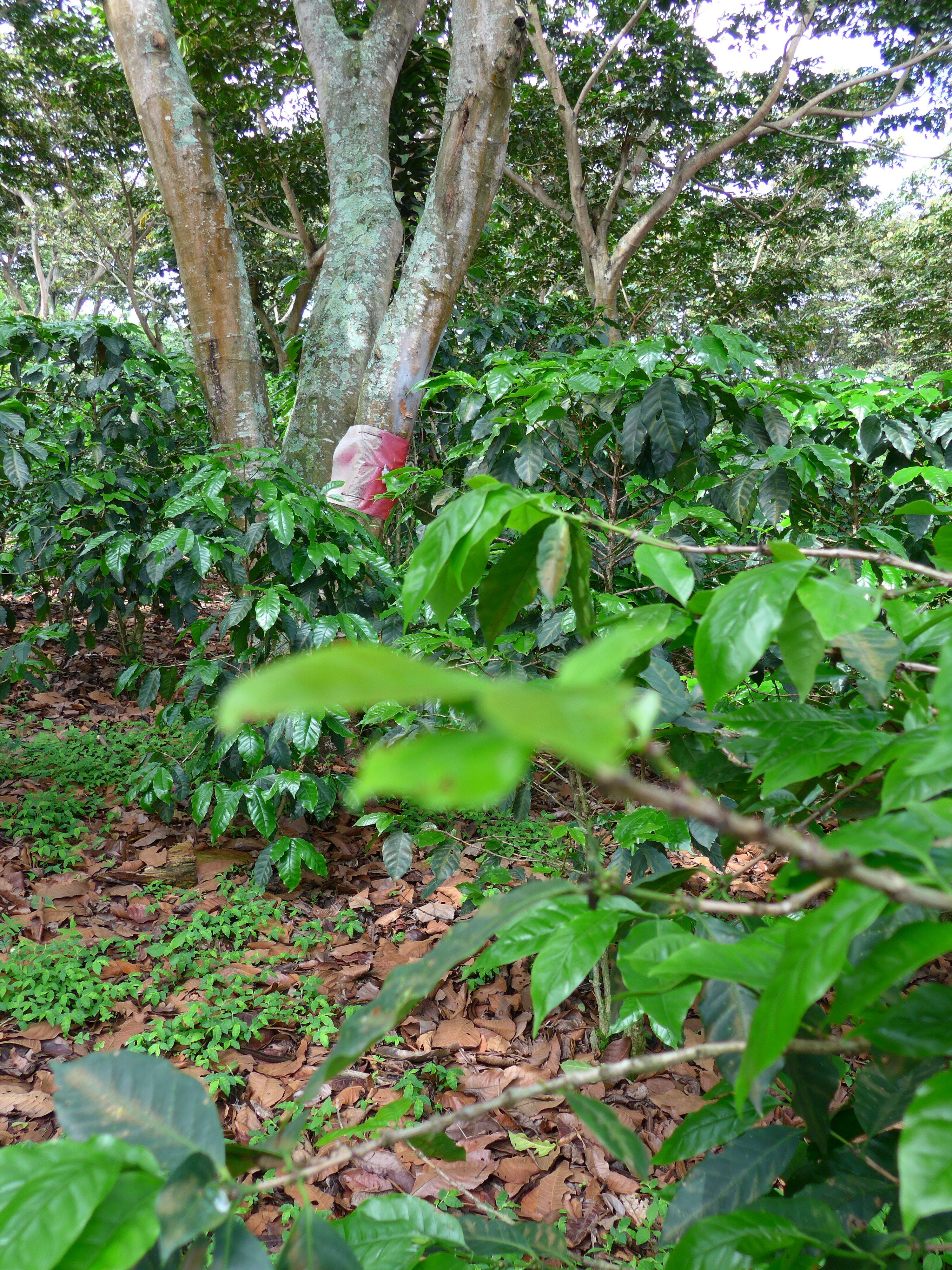Sam’s Adventure to Finca El Bosque, Guatemala
 Farm road, Finca El Bosque, Guatemala
Farm road, Finca El Bosque, Guatemala
Samantha Sobash-McWilliams, Lab Manager from the US, ventured to Guatemala and visited Finca El Bosque. She recounts her time on the farm below:
Just on the outskirts of Guatemala City, about an hour’s drive, you come upon the small city of Amatitlan, with its own beautiful lake. It is here we find ourselves in a microclimate where Finca El Bosque flourishes. Officially Guatemala has 8 growing regions, however there are over 300 micro-climates within the country, which makes it uniquely positioned to produce small, quality lots. Producers Señor Roberto Diaz Schwarz and his son, also named Roberto, meet us in hopes the rain will hold out while we explore the farm with them today. It is the start of the rainy season after all. As we jump in the truck, I eagerly listen as Roberto shares the current successes and trials of the farm, and their plans for the future of this family business.
Just about a month prior, the flowering occurred. A fleeting, striking moment that he tells me was excellent this year and had the pictures to prove it. A good flowering is a sign of healthy plants and a good start to the next life cycle of the coffee cherries.

Coffee nursery, Finca El Bosque, Guatemala
We begin by driving up to the highest point of the farm, 1,500 masl where the Red and Yellow Catuai trees grow. Shiny, rich green leaves invite you to wander off the path to get a closer look. The branches are already beginning to develop buds which will develop into deep red coffee cherries in the next several months. In addition to Red and Yellow Catuai, the farm also grows Pacamara, Bourbon, and Sarchimor. The newest addition is the Tabi varietal – a hybrid of Typica and Bourbon. This hybrid is particularly tolerant to Coffee Leaf Rust, which has and continues to be a challenge in the area. However, so far the Tabi has not grown very successfully here, offering low yields. But Roberto continues to see what will happen, since it has only been a few years since he introduced the seeds to his land from a friend in Costa Rica.
From there we journey back down winding, unpaved roads as tree branches brush over the truck. Interestingly, 98% of coffee in Guatemala is shade grown. This has such a positive impact on the biodiversity and health of the environment. You can hear an abundance of birds. Finca El Bosque prune indigenous trees of heights to provide the perfect amount of cover for the coffee plants to grow at a slow but steady pace for developing the sweetest cherries.

Lush forest of native vegetation shading coffee, Finca El Bosque, Guatemala
We pause at the mid-point of the farm, Señor Roberto and I take a brief walk together down a dirt road that bisects the upper and lower half of the mountain, while he tells me about the original part of the farm. He says he will never get rid of the plants that are there, because they are what saved his farm in 2012 when Coffee Leaf Rust ran rampant through the country and destroyed most of their shrubs. He cannot explain how or why this part of the farm was immune to the Rust, but he was able to revive his farm from that section. For that reason, he will never alter that part of the land. Another obstacle producers face in the area is the Broca (Coffee Berry Borer). And so, the family has doctored up a new way to deter them from burrowing into the coffee plants. Bright red, sticky sheets with alcohol filled plastic bottles are tied to shade trees in the vicinity of the coffee plants, which lure the beetles there and kill them. And fortunately, it is working!

Broca trap example, Finca El Bosque, Guatemala
We come to the bottom of the mountain and drive about 10 minutes down the road to the family-owned wet mill. During the harvest period (February to April), ripe coffee cherries are hand-picked and driven down to this wet mill daily. There the coffee is washed and sorted for floaters (unripe coffee cherries). After that, the coffee is pulped and sifted to ensure uniformity of screen size. Following these quality protocols, the coffee is fermented for 48 hours, 24 hours dry and 24 hours with water. All the water that is used in the mill is collected and used for irrigation of the fields on their land. Once the fermentation process is complete, the coffee is then moved to the raised beds for drying. Traditionally coffee is patio dried, however here Sr. Roberto has adopted using the African-style raised beds as it allows for more even drying.

Raised drying beds, Finca El Bosque, Guatemala
In addition to coffee, the family grows avocado plants to provide a supplemental income. Currently, they only have 10 trees but are working towards up to 100 trees. This will take intensive manual labor, and right now labor is difficult to find. In the harvest season, the farm needs about 60 pickers. In addition to these crops, the family has a dairy farm, La Carmela, adjacent to their wet mill and are also developers of real estate locally; primarily to offer opportunities to people who are unable to get loans through the banks.
It was an absolute pleasure to spend the morning with the Diaz family on their family’s land. I am so grateful the rain held out for us to be able to enjoy this beautiful, quiet time at the farm. A time of new beginnings.

Finca El Bosque, Guatemala
Photos and Content by Samantha Sobash-McWilliams